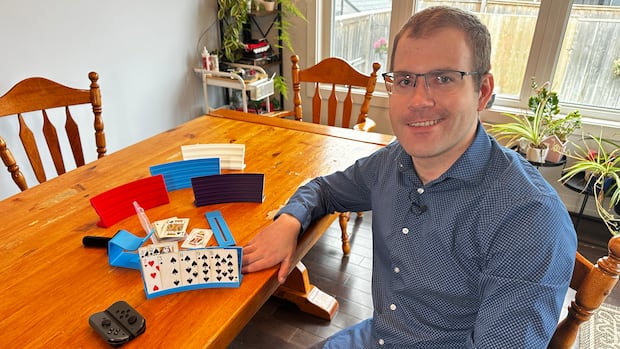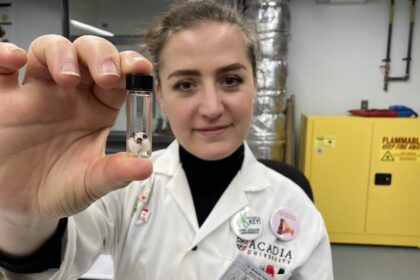SaskatoonNicolas Vaagen is using 3D printing to help people with disabilities live life to the fullest.Nicolas Vaagen is looking for more people to help by building tools for themSean Trembath · CBC News · Posted: Oct 20, 2025 7:00 AM EDT | Last Updated: 5 hours agoNicolas Vaagen uses a 3D printer to make tools that help people with disabilities do everyday tasks and fun activities. (Chanss Lagaden/CBC)Nicolas Vaagen is using 3D printing to help people with disabilities live life to the fullest.He was a computer science student in 2020 when a car crash left him with a brain injury. He has limited use of his right side and memory issues.“I spent a very long time in rehab,” he said in an interview at his home in Warman, just north of Saskatoon. “I don’t remember much from that time, and I was in outpatient therapy for a time, but after all the therapies, I came back to trying to live with a significant disability.”Vaagen found himself frustrated with some of the tasks many people without disabilities consider routine — things like clipping his nails and reading books. He also found there are not always easily accessible tools for those tasks.“A lot of the assistive technology out there exists, but it exists with the caveats of having to use this base program or using this exact software,” he said.“It’s very limited in scope. And I don’t like to be limited.”He found out about Makers Making Change, a program run by the Neil Squire Society, a non-profit that uses technology to help people with disabilities. Makers Making Change connects makers with disabled people requiring adaptive technology. Vaagen saw that it offers grants for people to buy 3D printers for making tools.“I thought, ‘I want to make assistive technology.’ So I applied and I got accepted,” he said.At first, Vaagen relied on schematics provided by Makers Making Change. The first thing he printed was a stand that he can put a set of nail clippers in, making them easier to use with his right hand, which lacks dexterity.“It wasn’t that I couldn’t do it. I couldn’t do it without this specific thing. And getting that specific thing was great, because it increased my independence,” he said. “I was able to do it 100 per cent on my own, which was empowering.”This nail clipper stand was the first assistive tool Nicolas Vaagen made with his 3D printer. (Chanss Lagaden/CBC)Vaagen wanted to go further by designing tools himself. He acquired some 3D modelling software and, after a bit of a learning curve, started making his own designs.His first creation was a modification of an existing tool that helps people with double vision focus on specific lines of text. It didn’t work great, but he wasn’t discouraged.He’s gone on to design and print a variety of tools, from an adapter that allows him to play Nintendo Switch with one hand, to stands for people who aren’t able to hold playing cards.He stressed that tools like these, for life’s less critical tasks, are still important.“Just because you have that different level of ability doesn’t mean that you shouldn’t be able to enjoy life the same,” he said. “You should be able to play cards.”Nicolas Vaagen’s 3D printer makes a piece for a doorknob adapter. (Chanss Lagaden/CBC)A Statistics Canada survey in 2022 found that 32.7 per cent of people with disabilities had unmet needs for help with everyday activities.These activities range from household chores and personal hygiene to preparing meals and looking after personal finances.Makers Making Change says on its website that its goal is to help bridge that gap with DIY assistive technology — community-created devices made by volunteer makers.Vaagen’s latest project is an adapter that will make using doorknobs easier for a woman whose arthritis prevents her from gripping a regular doorknob.He said he’s looking for more Saskatchewan people to help and wants to get the word out.“I have more desire to work on things than I have things to work on,” he said.“I’m looking for people to reach out to me and I will work with you.”He can be reached by email at nicolasvaagen@gmail.com.
‘I dont like to be limited’: Sask. man using 3D printing to help disabled people navigate everyday tasks











